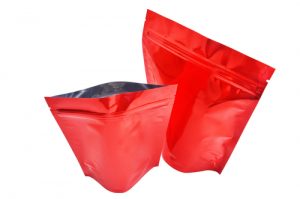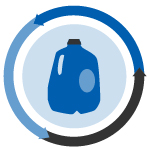 In September, Plastics Recycling Update readers were drawn to a wide variety of topics, including a packaging innovation, China’s imports ban, and food- and beverage-contact plastics decisions.
In September, Plastics Recycling Update readers were drawn to a wide variety of topics, including a packaging innovation, China’s imports ban, and food- and beverage-contact plastics decisions.

 In September, Plastics Recycling Update readers were drawn to a wide variety of topics, including a packaging innovation, China’s imports ban, and food- and beverage-contact plastics decisions.
In September, Plastics Recycling Update readers were drawn to a wide variety of topics, including a packaging innovation, China’s imports ban, and food- and beverage-contact plastics decisions.

A massive virgin PET production facility could shutter before it opens, and a New York county rolls out full-scale foam food-service packaging collection.
 A California company will process carpets underwater to generate better-quality nylon and PP pellets, and a French company says a recently acquired plastics reclaimer is compatible with its polymer compatibilization business.
A California company will process carpets underwater to generate better-quality nylon and PP pellets, and a French company says a recently acquired plastics reclaimer is compatible with its polymer compatibilization business.
 In Canada, a number of companies are tackling difficult plastic streams without using traditional mechanical recycling processes. One of them, Pyrowave, uses microwaves to depolymerize polystyrene scrap and has recently made some strong steps forward.
In Canada, a number of companies are tackling difficult plastic streams without using traditional mechanical recycling processes. One of them, Pyrowave, uses microwaves to depolymerize polystyrene scrap and has recently made some strong steps forward.
A polymer modifier technology was used compatibilize different resins in multilayer packaging so they could be recycled into new garbage bags. Those bags were then used by volunteers to clean plastics from coastlines.

Doug Woodring
The role of plastics in the larger sustainability movement has been the focus of plenty of industry conversations over the past decade. And it’s out of that environment that the Plasticity series of events has formed.

Nina Bellucci Butler speaks at the Resource Recycling Conference.
U.S. and Canadian end users could consume more of the recovered plastics generated domestically if prices and specifications meet their needs. But a handful of converging market trends are standing in the way of significant growth.
 California lawmakers have approved a bill mandating that carpet stewards achieve a 24 percent recycling rate and discouraging the use of incineration. The legislation will now head to Gov. Jerry Brown’s desk.
California lawmakers have approved a bill mandating that carpet stewards achieve a 24 percent recycling rate and discouraging the use of incineration. The legislation will now head to Gov. Jerry Brown’s desk.
 Future funding levels for the U.S. EPA are one step closer to certainty after lawmakers in the U.S. House of Representatives approved government spending outlined in a dozen agency-specific budget bills this month.
Future funding levels for the U.S. EPA are one step closer to certainty after lawmakers in the U.S. House of Representatives approved government spending outlined in a dozen agency-specific budget bills this month.
 Plastic marine debris makes its way into the Arctic, and analysts predict how China’s proposed import ban could lead to a greater reliance on virgin plastics in Chinese manufacturing.
Plastic marine debris makes its way into the Arctic, and analysts predict how China’s proposed import ban could lead to a greater reliance on virgin plastics in Chinese manufacturing.
